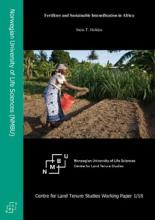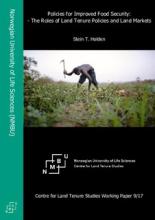Land Library
Welcome to the Land Portal Library. Explore our vast collection of open-access resources (over 74,000) including reports, journal articles, research papers, peer-reviewed publications, legal documents, videos and much more.
/ library resources
Showing items 1 through 9 of 161.The paper investigates the important role of fertilizer to enhance sustainable intensification and food security in Sub-Saharan Africa based on a multi-disciplinary literature review.
We use four waves of panel data from Northern Ethiopia to investigate the link between Food for Work (FFW) participation and the diversity of food consumption and production.
This chapter is written for the European Commission for a book to be published by Springer on The Role of Smallholder Farms in Food and Nutrition Security. The author takes full responsibility for the content.
Farmland resources in mountainous areas are important for regional food security and ecological security. Studies concerning changes in farmland use in mountainous areas are of considerable significance in China.
During the past three decades, the Pisque watershed in Ecuador's Northern Andes has become the country's principal export-roses producing area. Recently, a new boom of local smallholders have established small rose greenhouses and joined the flower-export business.
Water scarcity and land degradation are emerging threats to global food production. The dry land regions of world are affected by climate change to a greater extent and facing food insecurity.
Rehabilitating degraded rangelands using enclosures offers various benefits to agro‐pastoral households. However, enclosure benefits cannot be generalized as there are variations across dryland ecosystems and societies.
Rural construction land consolidation (RCLC) is an innovative approach to coordinating the outmigration of a rural population and the increase in rural housing land, thereby protecting farmland and ensuring food security, adding to urban construction land quotas, and improving the rural habitat e
PURPOSE: Livestock already use most global agricultural land, whereas the demand for animal-source food (ASF) is expected to increase. To address the contribution of livestock to global food supply, we need a measure for land use efficiency of livestock systems.




